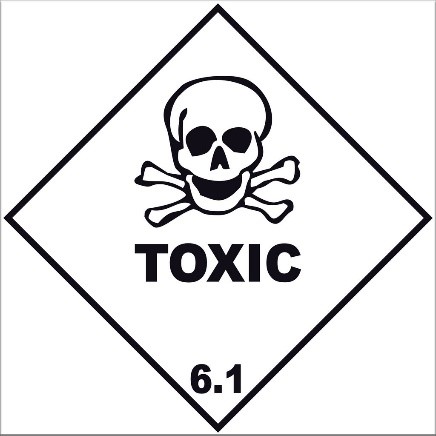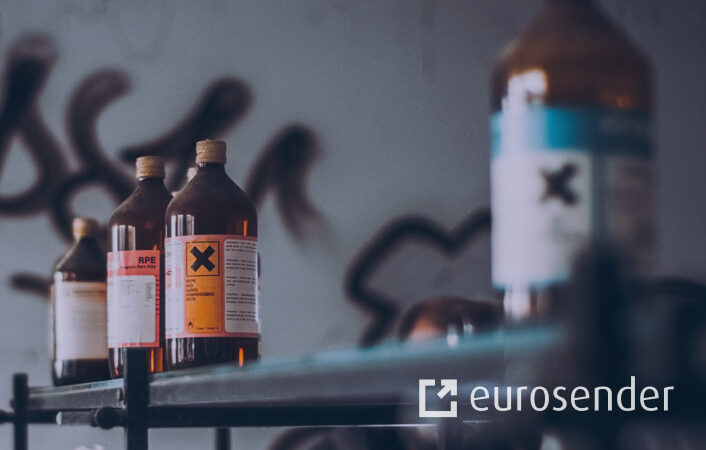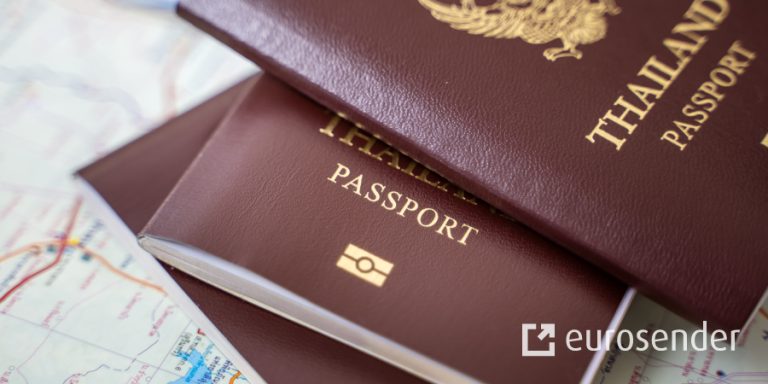Transporting toxic goods – is it allowed?
Key takeaways
- Toxic goods fall under Class 6 of Dangerous Goods, including toxic (6.1) and infectious substances (6.2).
- Transport is highly regulated, typically prohibited except for authorised parties (manufacturers, dealers, researchers).
- Proper packaging and labeling (hazard labels, vehicle signage) are essential for safe transport.
- Strict precautions are required, such as temperature control, separation from food, and no smoking near flammable toxic materials.
Click to ship up to 70% cheaper
Toxic substances are chemicals that can severely affect human health and put people’s lives in danger. Given their poisonous compounds, these substances are listed in Class 6 of a wide range of materials collectively referred to as Dangerous Goods. The Toxic and Infectious Substances category, which is the Class 6 official name, includes two sub-categories:
- Class 6.1 Toxic substances
- Class 6.2 Infectious substances
Read more about transporting dangerous goods here.
In this article, we’ll help you understand toxic substances in general. We’ll also speak about transporting toxic goods.
So where do we start? Let’s figure out what toxic goods are.
Not all hazardous substances can be called toxic. For instance, toxic substances always contain poisonous elements. Swallowing or inhaling them can cause serious damage to your health and even be life-threatening. One must absolutely avoid direct skin or eye contact with this type of chemicals. Temperature control is key when dealing with Class 6 chemical agents, as they become extremely dangerous due to their thermal decomposition properties. Many toxic materials are inflammable.
You may also be interested in:
- Prohibited and restricted items – FedEx
- Prohibited and restricted items – UPS
- Prohibited and restricted items – DHL
- What happens when you ship prohibited items?
Here are a few examples of the most commonly used toxic substances (6.1):
- Alkaloids;
- aniline;
- arsenic compounds;
- cyanide;
- chloroform;
- lead acetate;
- methyl bromide;
- motor fuel anti-knock mixtures;
- nicotine;
- pesticides;
- strychnine;
- tear gas, etc.
Read more about:
As for infectious agents (6.2), this division includes substances containing viable micro-organisms having the potential to cause human or animal diseases. Listed below you’ll find some indicative examples of the substances said to contain human and animal pathogens:
- viruses;
- bacteria;
- fungi;
- parasites;
- rickettsiae, etc.
Many products are shipped in refrigerated vehicles to avoid any contamination.
Read more about:
The general requirements for shipping infectious toxic substances have been formulated by the World Health Organization.
Is shipping toxic substances allowed?
Overall, transporting toxic goods, such as poisons and irritating materials, is internationally prohibited. Yet there are some exceptions. So, what are the toxic goods, that can be accepted for transport? These are substances or poisons that can be qualified as consumer commodities, provided that their packaging meets all conformity requirements.
Transporting authorised toxic goods is strictly regulated and can be acceptable exclusively between authorised parties. Shipping toxic substances can be carried out under certain conditions.
Toxic substances for scientific use may be sent only between:
- manufacturers;
- dealers;
- bona fide research or experimental scientific laboratories;
- state employees or local governments (provided that they have the official document enabling them to use the aforementioned agents).
For domestic air transport, a Shipper’s Declaration for Dangerous Goods will be required.
As for toxic or poisonous drugs and medicines transport, the authorised senders may only be:
- Manufacturers
- Dealers
The possible receiving parties include but are not limited to the following:
- licensed physicians;
- surgeons;
- dentists;
- pharmacists;
- apothecaries ;
- medicinal chemists ;
- veterinarians;
- cosmetologists;
- barbers.
In limited cases, when the shipping has been initiated by a drug manufacturer or the manufacturer’s registered agent, the return of prescription drugs to the sender may be accepted.
What are the precautions when transporting toxic goods?
Transporting toxic materials is risky. To avoid any incident, carriers must comply with specific regulations, be vigilant and take multiple precautions.
Goods toxicity and dangerousness
In case of presence in a package of substances potentially harmful for the human body and belonging to class 6.1 of hazardous goods (e.g. phytosanitary products), the latter must be identified by the following label:

The danger label is mandatory when a parcel is sent by road traffic. It must be affixed on the parcel, clearly visible and easily recognisable. The hazard label should be in the form of a square pointing upwards. The minimum height of the label is equal to 14.14 cm. Apart from that, all vehicles transporting dangerous goods must carry at the front as well as at the rear a rectangular plate having a reflecting orange colour and being 30 cm high and 40 cm wide:
- for packaged goods, this orange sign remains blank.
- for tanks, this sign is codified according to a specific type of product being carried.
Rules to be followed when handling in any way a package containing toxic goods
Protect from heat. Keep separately from foodstuffs for humans or animal feed. Toxic liquids, which are also inflammable, should be kept away from sparks, flames and other sources of ignition. No smoking in the vicinity is allowed.
In case of damage of a package containing toxic products
In case of manipulating a damaged package containing toxic goods, do not inhale dust, vapour or gases (serious risk of poisoning!) that can emanate from it. Avoid any contact with the skin. Immediately leave the place where the package is located, ensure that no one else has any contact with it and notify special services dealing with such issues. In case of an accident or if you feel unwell, contact a doctor immediately.
Now that you know what toxic goods are and what the general rules and precautions are in the context of transporting toxic substances, we must note that in the case of Europe, it is the European Agreement concerning the International Carriage of Dangerous Goods by Road – ADR. This document sets forth the rules for the safe transport of dangerous goods and, among them, toxic goods and substances. Yet, it does not have the force of law and, therefore, each particular country must control it on its territory according to its legislation. Thus, before transporting or organising toxic substances shipping, you must get to know all the rules and details about transporting your specific goods in a specific country (or specific countries), as the rules may vary from country to country. Should you have any questions concerning the need to transport or ship toxic goods and substances or if you are in doubt, feel free to contact our support team, it will be a pleasure for us to help you and answer your questions.
The article was created in cooperation with our content creator Marina Ryabchuk.
Click to ship up to 70% cheaper
About the author
Marcel Nahtigal is the Head of Marketing at Eurosender, blending creativity with data-driven strategies to revolutionize logistics.






